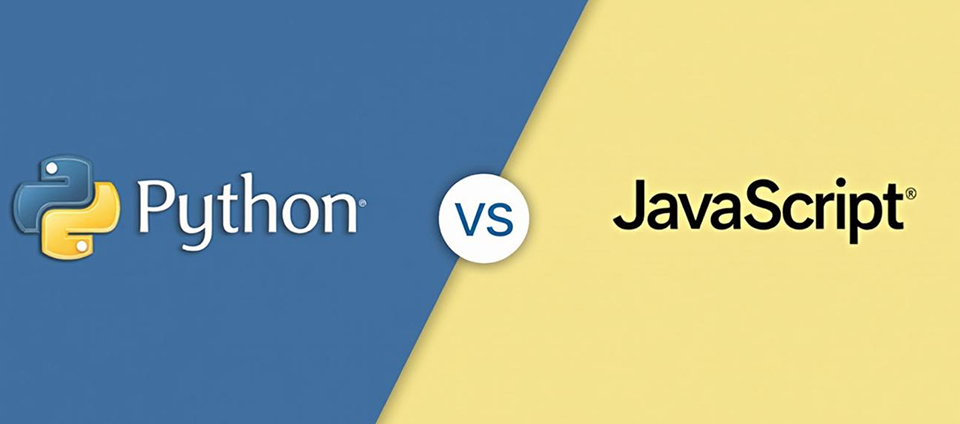Python vs JavaScript: Choosing the Right Tech Stack
The debate of Python vs JavaScript continues to dominate conversations around digital innovation. Businesses planning large-scale artificial intelligence development, web applications, or automation workflows must weigh the unique capabilities each language brings, especially when choosing an AI development company or tech partner.
Python web development provides a robust foundation for backend systems, making it an ideal choice for enterprises seeking to build scalable Python solutions. From advanced analytics to Python for business applications, its clean syntax and AI-friendly libraries empower developers to build solutions that are agile, secure, and ready for the future.
Meanwhile, JavaScript’s versatility across front-end and full-stack environments makes it indispensable for real-time interfaces and modern web experiences. Teams looking to hire Python developers or invest in AI integration services must first evaluate how each language supports long-term growth, efficiency, and digital resilience.
Python vs JavaScript: Core Philosophies
Python was designed to emphasize readability and simplicity. Its clear syntax makes it ideal for rapid development and collaboration across diverse engineering teams. This readability has made it a favorite in academia, research, and among businesses seeking to minimize onboarding complexity. Programmers describe it as intuitive, elegant, and conducive to high productivity: key for fast-moving projects.
JavaScript, meanwhile, was created with the web in mind. Its evolution from a front-end scripting language to a full-stack development powerhouse (thanks to Node.js) has made it indispensable for real-time applications and dynamic user interfaces. JS runs everywhere: in the browser, on the server, and even within desktop and mobile apps, offering versatility that few other languages can match.
Python vs JavaScript: Use Cases

When it comes to Python vs JavaScript, context is everything. The most effective tech leaders look beyond popularity trends and assess each language's alignment with business goals. Now, let's consider Python vs JavaScript through different lenses.
Web Development
When building interactive web applications, JavaScript is virtually unavoidable. It's native to browsers, supports asynchronous communication, and powers rich client-side experiences. Libraries like React, Angular, and Vue have made it easier than ever to build scalable, engaging user interfaces quickly and efficiently.
However, Python web development has gained significant traction. Django and Flask excel at rapid backend development, clean API architecture, and seamless database integration. For teams prioritizing robust, secure, and data-driven server-side logic, Python often outpaces alternatives, especially when paired with a dedicated JS frontend. Django, for instance, offers built-in ORM and security features like CSRF protection and form validation, which help accelerate development without sacrificing best practices.
AI, Data & Business Applications
When it comes to artificial intelligence development, Python is the undisputed leader. Established AI frameworks like TensorFlow, PyTorch, and scikit-learn mean that any AI development company or research group will almost certainly use Python as its core language. It supports generative AI, deep learning, natural language processing, and computer vision seamlessly, making it the clear choice for teams building intelligent solutions.
For Python for business applications, the benefits are equally compelling. Its clarity, modularity, and reliability make it ideal for ERP platforms, fintech tools, analytics pipelines, and automation scripts. Teams can rapidly iterate while cultivating maintainable, scalable systems. Python’s ecosystem includes libraries for finance (Pandas, NumPy), web services (FastAPI), and even robotic process automation (RPA) - supporting large-scale business workflows effectively.
Performance and Scalability
Performance often enters the conversation when comparing Python and JavaScript. JavaScript, especially on Node.js, uses JIT compilation and an event-driven I/O model, making it well-suited for handling asynchronous, network-heavy tasks efficiently. Benchmarks show it handles concurrent requests with lower overhead than traditional Python web servers.
Yet speed isn't everything. With the right architecture and hosting, scalable Python solutions can match Node.js for many real-world applications. Python’s ecosystem supports concurrency models via frameworks like asyncio and threading. Moreover, code clarity and maintainability often result in faster development cycles, fewer defects, and easier long-term scaling, particularly valuable in enterprise and AI environments.
Talent and Hiring
The talent pool for both languages is vast, but the ideal choice depends on your project goals. If your roadmap includes AI integration services, data pipelines, or backend-heavy logic, you're better positioned to hire Python developers experienced in algorithms, AI frameworks, and backend architecture. If your focus is on engaging user interfaces or real-time front-end features, JavaScript engineers deliver the required skill set.
Most successful technology organizations adopt a hybrid model: Python for backend/stateful logic and JS for dynamic, interactive front-end. This division allows teams to play to each language’s strengths while delivering robust, future-proof platforms.
Ecosystem & Integration
Looking beyond language, it's vital to consider libraries and integrations. Python shines with its mature tooling: data analysis (Pandas), machine learning, scientific computing, web servers, and AI. Integrations with message queues, cloud services, and CI/CD pipelines are well-supported, making it easier for teams to launch quickly and integrate with modern stacks.
JavaScript shines with API clients, front-end libraries, serverless functions, and full-stack frameworks like Next.js. NPM ecosystems contain packages for AI inference (tf.js), cloud connectivity, and front-end optimization. The ecosystem is always evolving, with ample community support.
Security & Maintenance

Security matters, especially in enterprise systems. Python’s strong typing, code simplicity, and defensive programming libraries reduce vulnerabilities. Frameworks like Django automatically prevent SQL injection, XSS, and CSRF, helping teams enforce secure defaults. When building internal enterprise software or client-facing portals, that security baseline matters.
JavaScript’s strength lies in front-end design but can introduce risks if not managed carefully. Front-end complexity, external dependencies, and browser injection vulnerabilities demand a disciplined approach. Modern frameworks incorporate security features - and secure coding patterns help harden JS applications effectively.
Developer Experience
Both languages offer engaging, productive environments, but they suit different mindsets. Python’s simplicity, clear syntax, minimal boilerplate, and concise libraries, helps developers stay focused on business logic rather than code structure. This fosters fast iteration and reduces technical debt, especially helpful for startups and data teams.
JavaScript’s flexibility is powerful but requires discipline. Complex asynchronous patterns (callbacks, promises, async/await) and evolving front-end ecosystems demand structure, tooling, and architecture upfront. Teams must proactively manage dependencies and maintain modular design to avoid codebase bloat.
Decision-Making Framework
When deciding between Python and JavaScript, align with your product goals:
- Choose JavaScript if you need rich, fast front-end experiences and want a unified stack via Node.js.
- Choose Python if you’re focused on AI, large-scale backend logic, data workflows, or complex computation.
- Choose both: many of today’s best-performing applications combine a Python backend with a JS frontend.
This hybrid approach combines the best of both languages - fast prototyping, intelligent features, and interactive UIs.
Final Thoughts
The Python vs JavaScript conversation is not a matter of choosing one winner, it’s about alignment. Partnering with a competent AI development company can help you deploy Python to build intelligent systems and use JavaScript to deliver responsive front-ends. With AI integration services, Python can embed predictive capabilities, and JS can present them in intuitive interfaces.
Teams that choose wisely - designing Python web development for secure, scalable backends and JavaScript for engaging UI experiences, position their solutions for long-term relevance. Whether building enterprise apps, consumer tools, or AI-driven platforms, matching language to mission makes all the difference.
The roadmap should be guided not by popularity, but by specific application needs: data logic vs user experience, server-side processing vs client-side interactivity, and AI features vs UI responsiveness.



